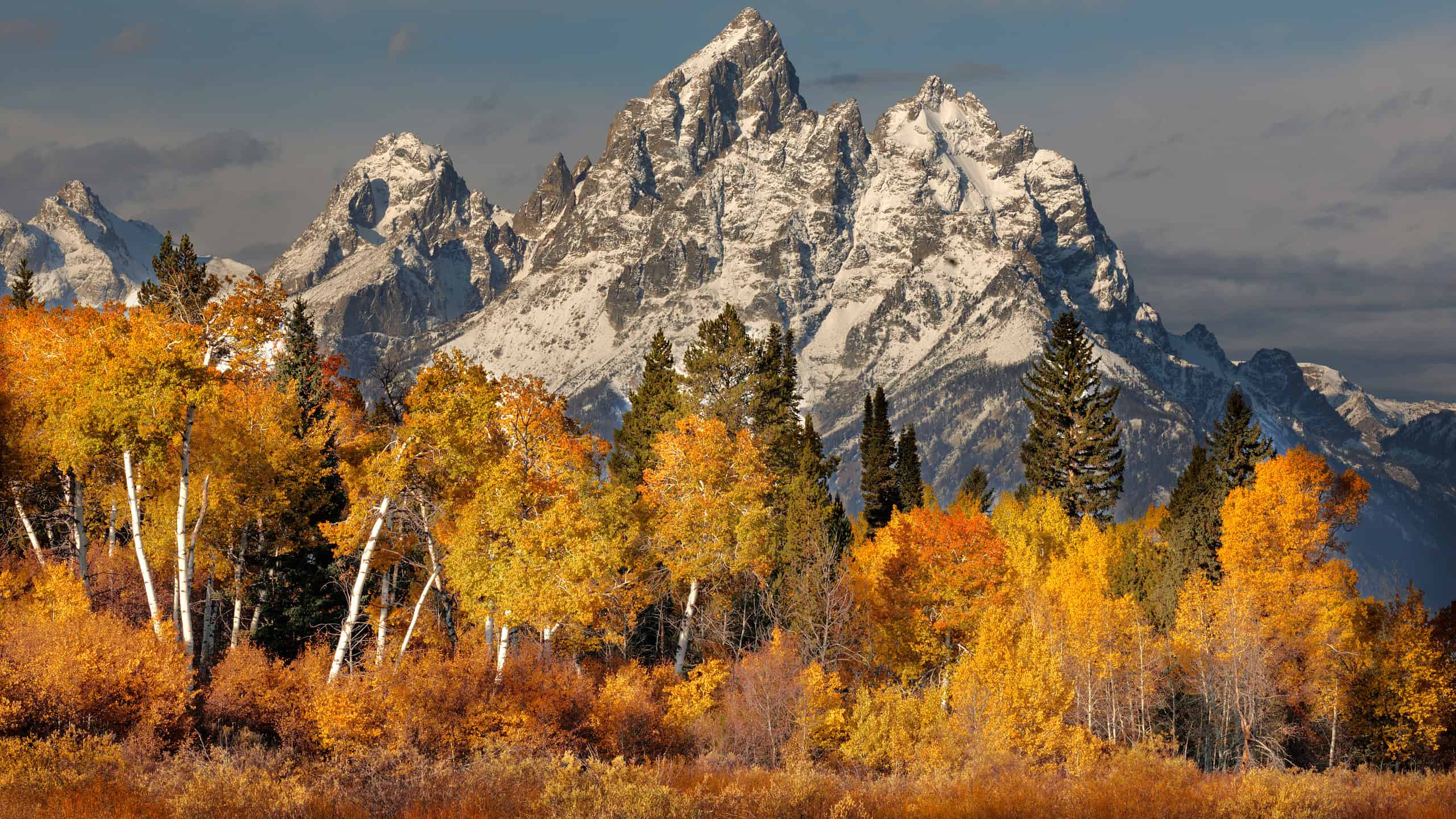An impressive mountain range in Wyoming, the Grand Tetons are truly grand indeed. The tallest peaks dominate the landscape while the picturesque valleys below are home to some of the most diverse and fantastic natural landscapes out there. A mountain climbing paradise, there are also plenty of things to do for those who prefer hiking, fishing, camping, or just taking in the beauty of nature.
If you haven’t visited this area of the United States, you should definitely put it on your bucket list. The park is located near Yellowstone and is connected by a scenic road between the two parks. There are also plenty of options for lodging and camping, whether in Grand Teton, Yellowstone, or nearby. Fortunately, we have some amazing facts that we’re sure will inspire your next trip.
#1 Grand Teton National Park is over 300,000 acres.
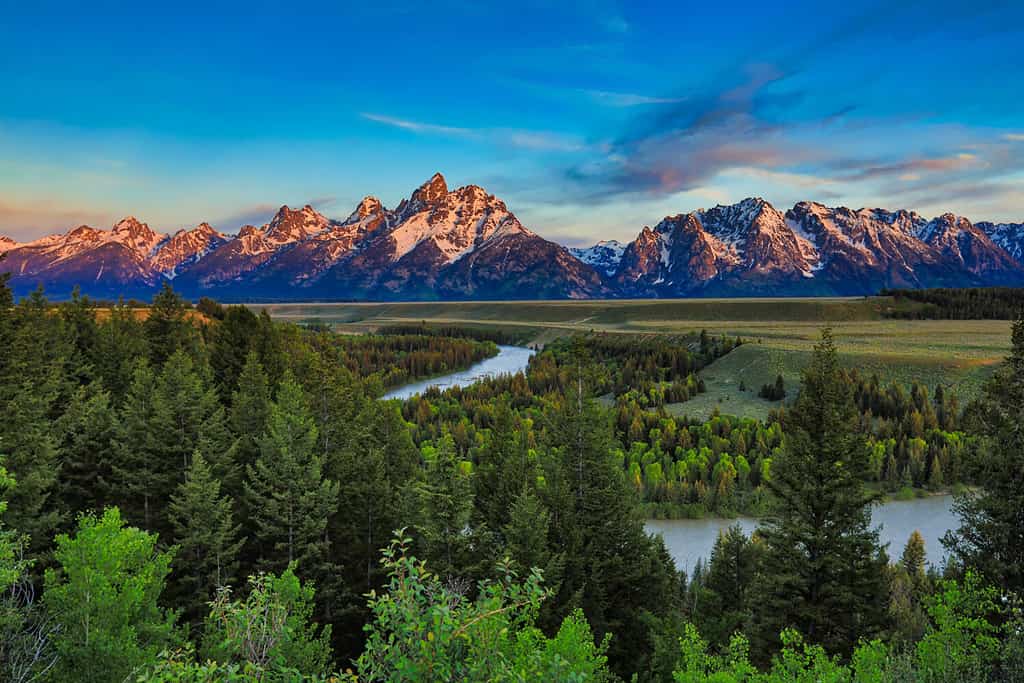
Grand Teton National Park includes forests, mountains, rivers, and many other types of natural wonders.
©aceshot1/Shutterstock.com
If you haven’t been to Grand Teton National Park, it’s important to know a little bit about this amazing natural wonder in the western United States. It is in Wyoming and includes over 300,000 acres within its border. It was originally much smaller when the park was established in 1929, however, additional land was added over decades until the park became its current size around 1950.
The park includes many smaller ecosystems and supports plenty of wildlife. Within the 300,000 acres, visitors enjoy wildflower meadows, still lakes, streams and rivers, and expansive forests. Of course, there are also plenty of epic mountain peaks and rocky areas, perfect for climbing and exploring. As part of the larger chain of Rocky Mountains, the Grand Tetons can be a great place for advanced climbers to get a real challenge.
Amazingly, Grand Teton is only 10 miles away from another breathtaking natural wonder. Yellowstone National Park is 2.2 million acres and features numerous hot springs and geysers, including Old Faithful. Yellowstone was actually the first established national park in the U.S. Many visitors to either Yellowstone or Grand Teton take time to see the other park since it is so close.
#2 The tallest peak in the range, Grand Teton, is 13,775 feet tall.
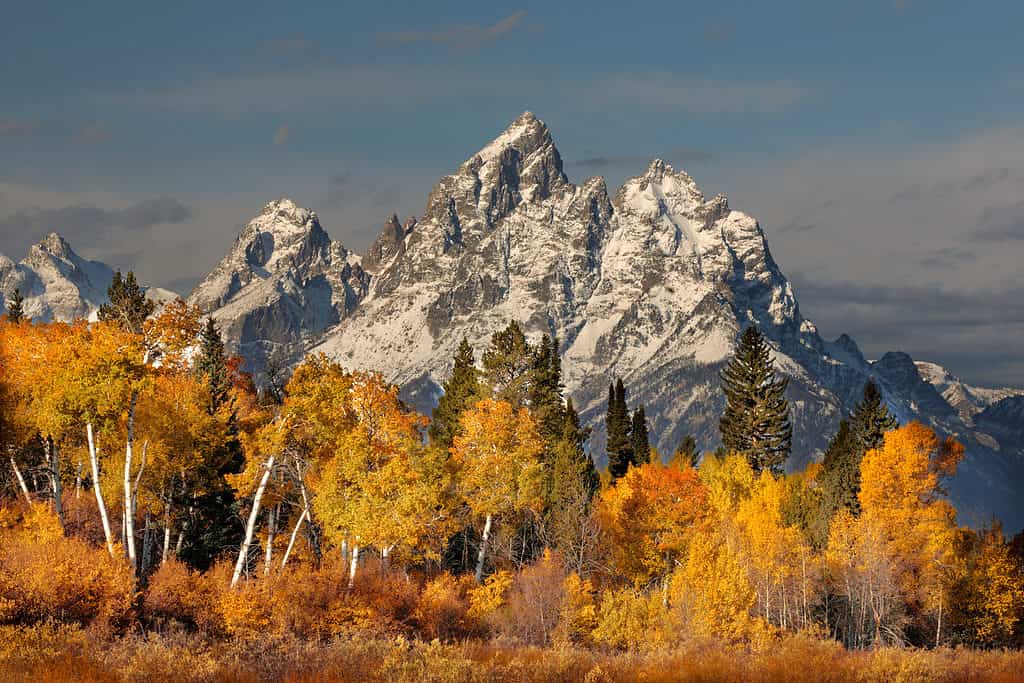
The Grand Teton Mountain Range has eight peaks that are over 12,000 feet high.
©Danita Delimont/Shutterstock.com
The entire mountain range covers around 40 miles and is just under 8 miles wide. There are numerous peaks, making it a must-visit destination for those interested in mountaineering. The highest peak is Grand Teton, which stands 13,775 feet high. There are eight peaks within the range that are over 12,000 feet. Even if you’ve visited Grand Teton National Park before, there is a new place to explore and something new to see. Mountain climbing is one of the most popular activities within the park, both for experienced climbers and those new to the sport.
Technical climbing that requires specialized equipment does require a permit, which you can pick up at the Jenny Lake Ranger Station within the park. Staying overnight in the backcountry also requires a permit. Even if you aren’t looking for permits, the Jenny Lake Ranger Station is a fun place to stop. It is located in a 1920s log cabin and houses both the ranger station and a museum. It also happens to be located near breathtaking Jenny Lake, one of the most visited spots within the park.
On the other end of the spectrum, the lowest elevation within the park is at Fish Creek, where the ground is 6,320 feet above sea level. This means that just within the park itself, there is a 7,455-foot elevation change. Keep this in mind if you are planning to go around the park quickly. You may want to extend your trip to ensure you don’t have any ill effects from the changes in elevation. Fortunately, that means more time to explore as well!
#3 The Teton Range is made of rocks that are more than 2.5 billion years old.
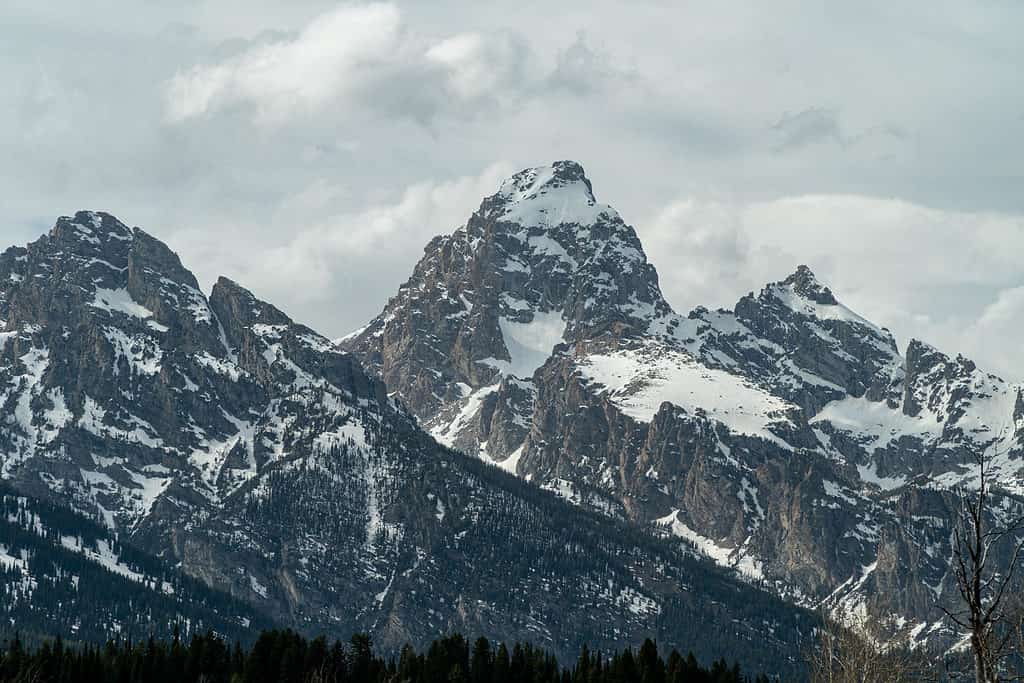
Many peaks within the Grand Tetons are snow-covered.
©RebeccaDLev/Shutterstock.com
One of the most striking things about the Grand Tetons is their abrupt appearance out of seemingly flat land. The mountains jut sharply into the sky and have plenty of sharp peaks. This is thanks to a series of earthquakes that predate any recorded history of the area. Scientists analyze rock structure and formations to determine not just how the mountains came to be but when. The rocks that form most of the Grand Tetons are called gneiss and date back as much as 2.7 billion years ago.
Rocks continued to be formed over many years in the Tetons. This resulted in numerous fossils that tell the story of small organisms and plants in the region. Even though the rocks that form the landscape are ancient, the mountains are relatively young compared to others in the U.S. They are situated over the Teton fault, which causes uplift on one side and downdrop on the other. This has been happening for around 10 million years. Even though it sounds like a long time to us, consider how long other mountains have been around. Older parts of the Rockies began as much as 80 million years ago and the Appalachian mountains in the Eastern U.S. are as much as 300 million years old or more!
#4 There is archaeological evidence of people living in the area as early as 11,000 years ago.

The valley near the Teton Range provided food and water for early inhabitants.
©Matt Grimaldi/Shutterstock.com
Not much is known about the very first inhabitants of this area, although archaeological evidence shows that people lived in the region around 11,000 years ago. This was around the time when the glaciers covering this part of North America began to recede. By the time encounters were documented in surviving written records by European explorers, there were numerous Native American tribes well established around Grand Teton. Some of the largest or most influential tribes included the Shoshone, Bannock, Blackfoot, Crow, Flathead, Gros Ventre, and Nez Perce. The valley portions of the Grand Tetons were rich in natural resources that helped them thrive, including animals to hunt, plants to gather, and freshwater to use.
Some of the first well-documented accounts of explorations through the Tetons were made by fur trappers. Richard and Jenny Leigh lived in the area. Richard was a fur trapper originally from Great Britain and Jenny was Shoshone. Later, John Colter split off from the famous Lews and Clark expedition to explore the Tetons. Through the years, Jackson Hole grew as a place for homesteaders and ranchers to settle.
#5 The largest elk herd in North America lives in Grand Teton.
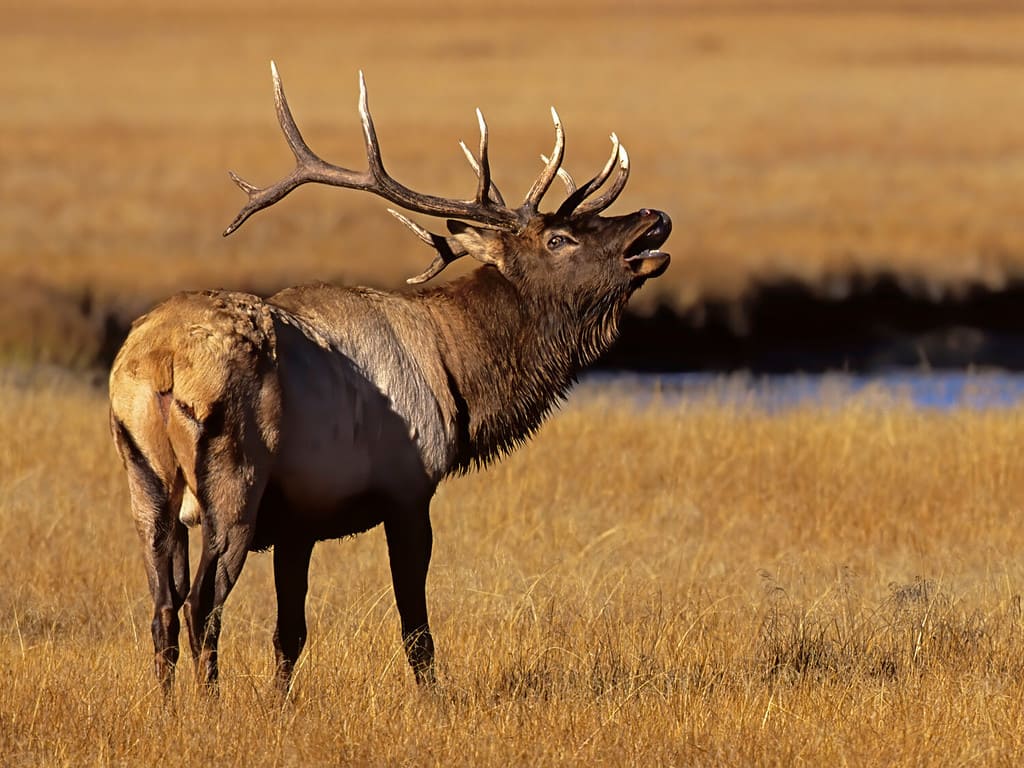
Elk live in the greater Yellowstone area, including Grand Tetons National Park.
©Danita Delimont/Shutterstock.com
The largest elk herd in North America calls this area home. Known as the Jackson herd, the population is closely tracked and managed by park services. The National Elk Refuge ensures that elk in the entire Yellowstone area, including Grant Teton, are protected and maintain a sustainable population. The elk herd typically stays on the refuge land between December and April. In the Spring, the herd travels to higher elevations. Once heavy snow arrives in the fall, the herd travels to areas near Jackson Hole.
There are over 60 species of mammals within the park as well as numerous birds, fish, insects, reptiles, and other creatures. Moose, elk, mule deer, bison, and pronghorn sheep are common throughout the park. They tend to be easier to spot in part because of their habits but also because they live in herds. Some of the more elusive species include grizzly bears, black bears, wolves, and mountain lions. It’s still important to keep an eye out for these predators, however, since they can be dangerous. A stop by the ranger station can help you learn more about the wildlife within the park, including how you can keep yourself and the animals safe during your visit.
#6 One of the first climbs to the top of Grand Teton was made in 1898 and the route is still used by climbers today.

Free climbing a mountain means you climb without equipment to help you, although you’ll need special equipment to reach the top of Grand Teton.
©PedkoAnton/Shutterstock.com
The honor of being the first to make it to the top of the massive Grand Teton is up for some debate since historical records from that time are not always reliable. Some claim that the first climbers to the peak were fur traders in the 1830s while others maintain that an 1842 expedition made it to the top. However, the well-documented arrival of Billy Owen in August 1898 is definitely one of the first, if not the first, to make all the way up the 13,775 feet. Owen was accompanied by experienced mountaineer Franklin Spalding, as well as two others. The route they used is named in honor of Owen and Spalding.
Why is this claim so well-known? One main reason is that the team completed it twice. They first made it to the top, relying heavily on Spalding’s knowledge of technical climbing, on August 11. Just a few days later, they did it again with a camera in hand. Owen then wrote and published a written account of the feat, claiming to be the first group to make it to the top. Others responded saying that they had already gotten to the top of Grand Teton. Either way, it was a monumental achievement!
#7 Abraham Lincoln’s son Robert explored Grand Teton National Park in 1883 when he was the Secretary of War.
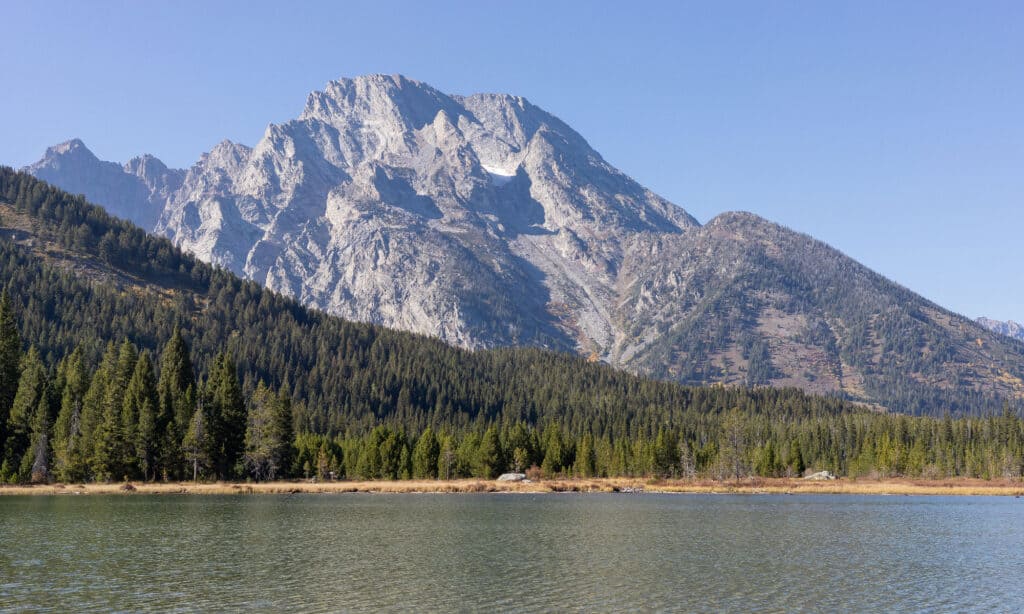
An 1883 expedition to Yellowstone and Grand Teton helped shape the national parks program.
©iStock.com/twildlife
When then-President Arthur visited the area near Yellowstone for a fishing trip in 1883, he brought along a 75-man entourage that included the son of Abraham Lincoln, Robert. Robert Lincoln was the Secretary of War at the time and an avid outdoorsman. Lt. Gen. Philip Sheridan, a prominent general in the Army, organized the trip. He was passionate about preserving Yellowstone and the surrounding land as a natural area and limiting commercial use of it. At the time, there were multiple plans to allow private companies to set up businesses, railways, ranching, mining, and other commercial uses within the park. Sheridan wanted to show major figures within the government, including the President, just how valuable the land already was to the American experience and landscape.
Within the group, which became known as the President Arthur Expedition, was a photographer who documented the trip. They traveled on horseback as they went through the vast wilderness, fishing and exploring. President Arthur was the first president to visit Yellowstone and the surrounding area. The trip was an important milestone not just in preserving Yellowstone but also in establishing the precedent of protected land within national parks.
#8 The land that became Grand Teton National Park was originally bought and later donated by the Rockefeller Family.

The donation of land by the Rockefeller created modern-day Grand Teton National Park.
©jack-sooksan/Shutterstock.com
The Rockefeller Family, one of the wealthiest and most influential families in the United States at the time, bought the land around Jackson Hole. Fortunately for us, the Rockefellers were also very active in philanthropy, community development, and preserving the natural wonders of the United States. Taking a strong interest in conservation, John D. Rockefeller, Jr. bought the land around Jackson Hole in the 1920s with the intent to protect and preserve it. He did so quietly so that other business-minded people wouldn’t get wind of his dealings and try to make it work to their own advantage.
He donated the land in the late 1940s. Rockefeller specified that it would be a national park. The original park was much smaller and with the addition of the land purchased by Rockefeller, as well as Jackson Hole National Monument, it became the large park that it is today. The John D. Rockefeller Jr. Memorial Parkway named in his honor runs through the park. It connects Grant Teton with nearby Yellowstone.
#9 Grand Teton National Park has its own airport.
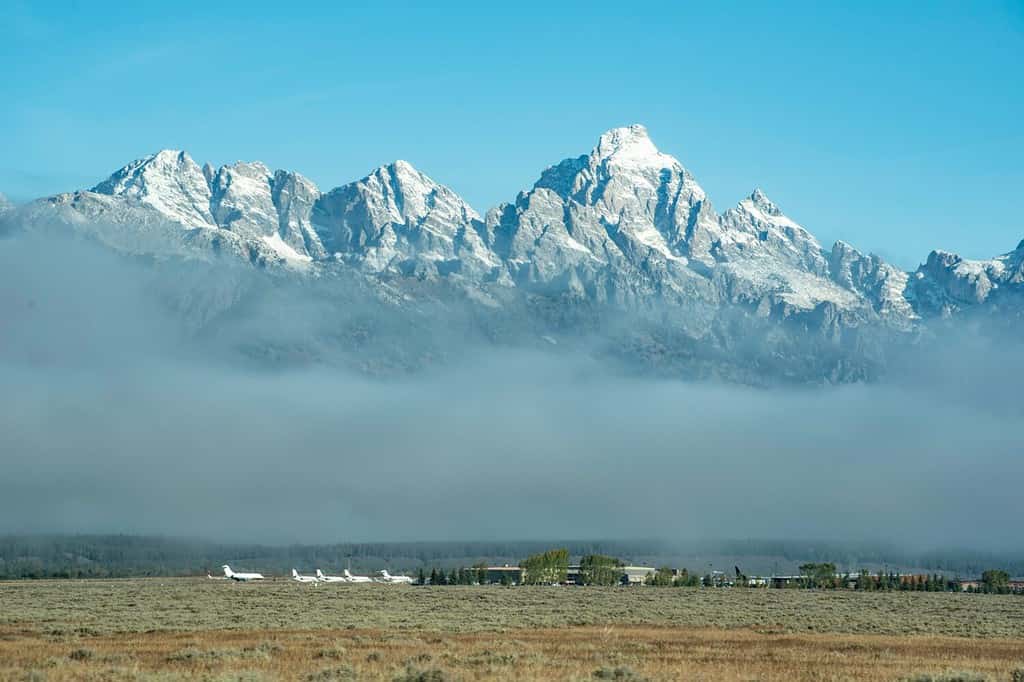
The Jackson Hole Airport is the only airport located completely within a U.S. national park.
©Betty Shelton/Shutterstock.com
The Jackson Hole Airport is entirely within the national park, the only commercial airport located completely inside a national park in the United States. The airport is small but conveniently located if you want to visit the park. It is around 30 minutes by rental car, taxi, or shuttle to the nearby town of Jackson, Wyoming, where many of the most popular hotels, resorts, and other lodging are located. Campsites within the park are easily accessed from the airport.
#10 Floating on the Snake River is a popular activity within the park.

Like humans, beavers cut down trees to build their homes.
©Chase Dekker/Shutterstock.com
Grand Teton National Park has plenty of amazing things to do but one of the must-do activities is to float down the Snake River. From the river, you can see the towering mountains overhead as well as get an up-close view of the many fish and other wildlife in the river. You might even see a moose taking a drink from the banks, a river otter resting, or a beaver building a dam.
The river does tend to change each year as it relies on snowmelt from the mountains. For this reason, it’s important to be familiar with navigating rivers and reading river maps. You should always check in with a ranger station to get up-to-date conditions and learn of any closures. One way to enjoy the river if you have less experience is to go with a guide or group. There are different sections of the river that are better suited to different skill levels.
Thank you for reading! Have some feedback for us? Contact the AZ Animals editorial team.

